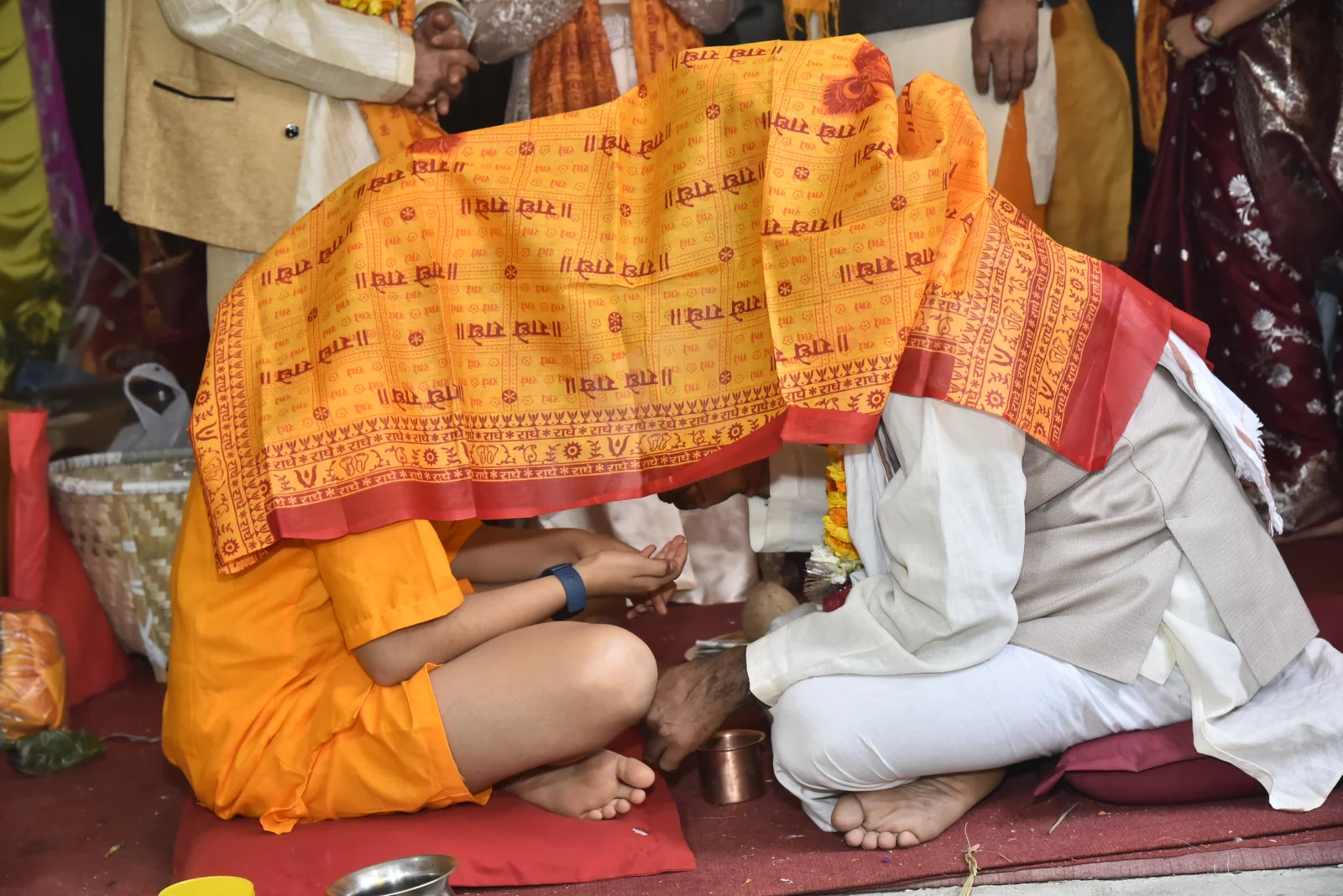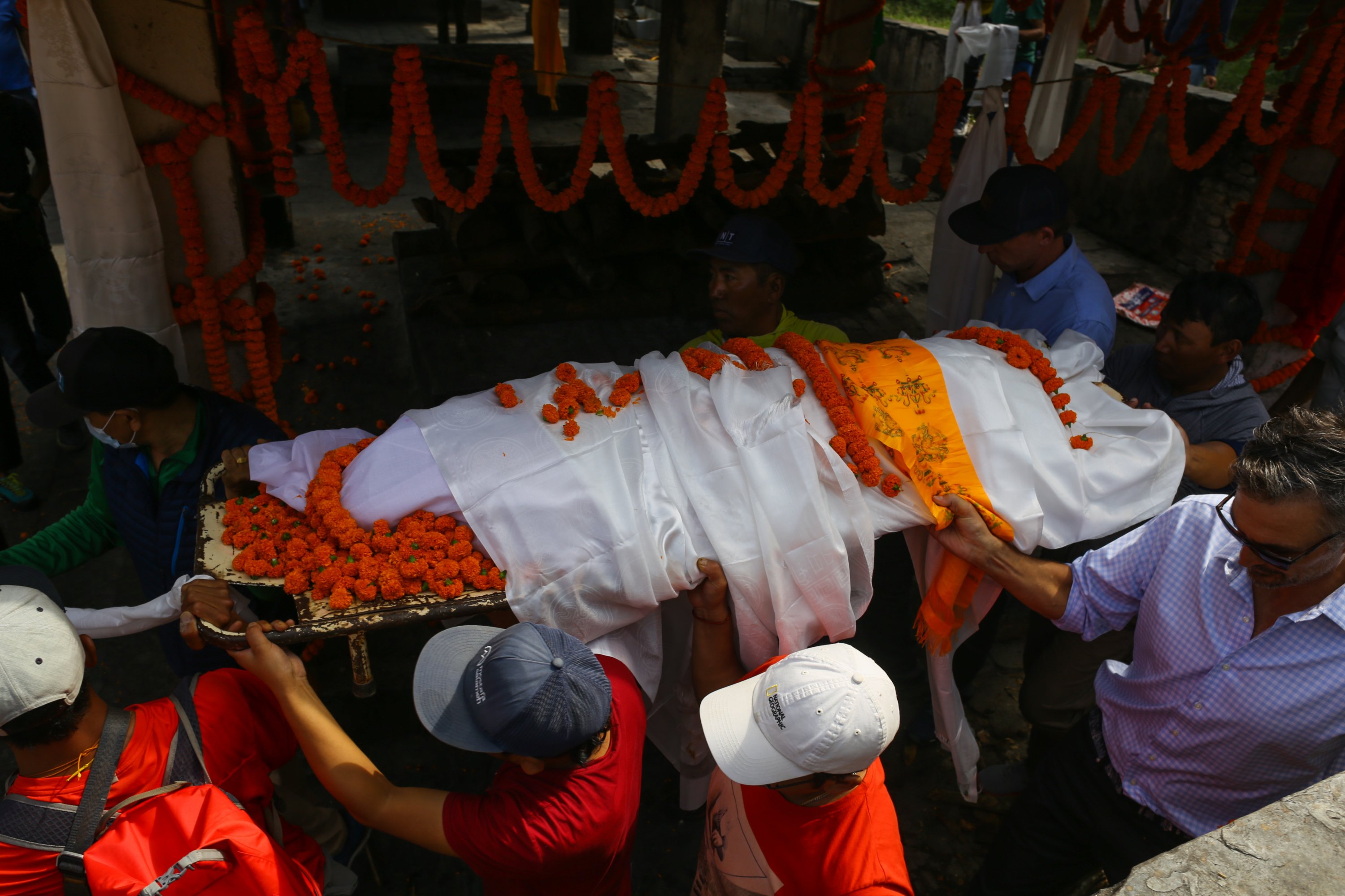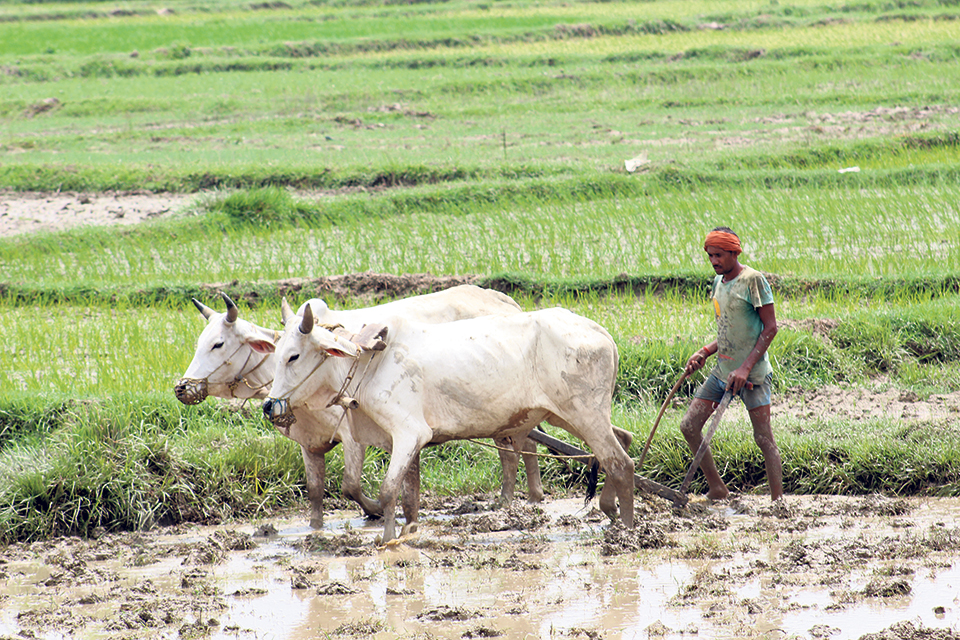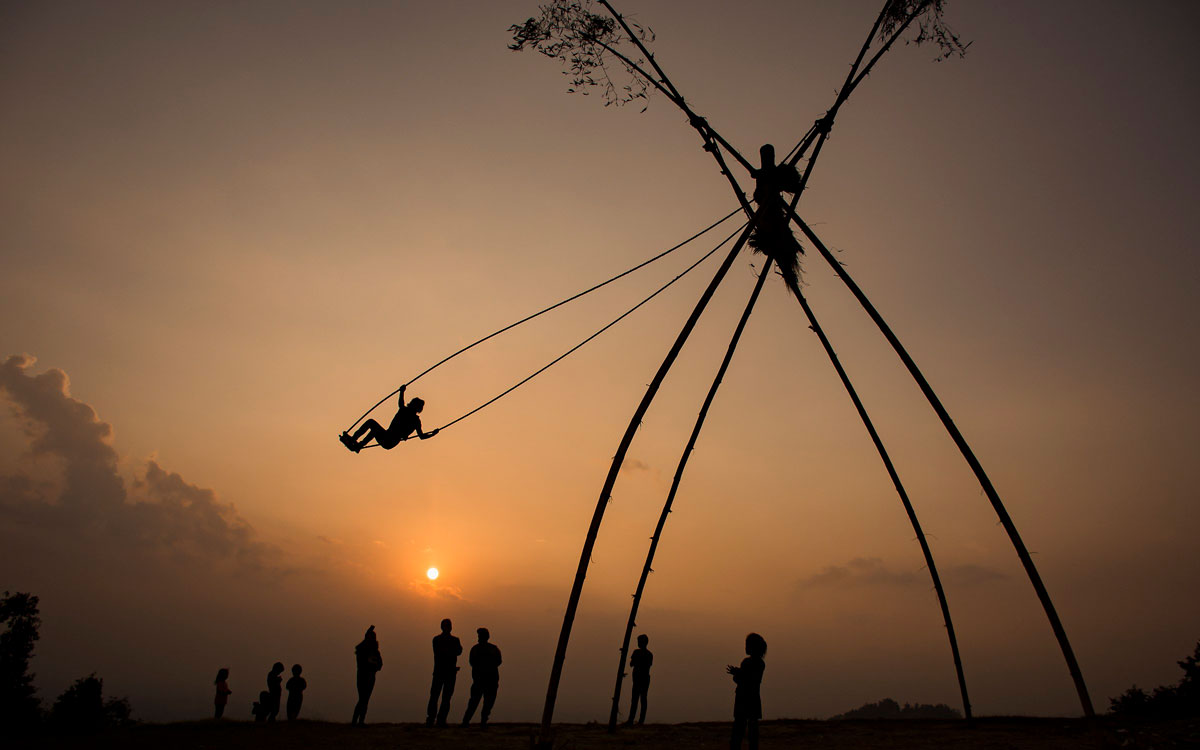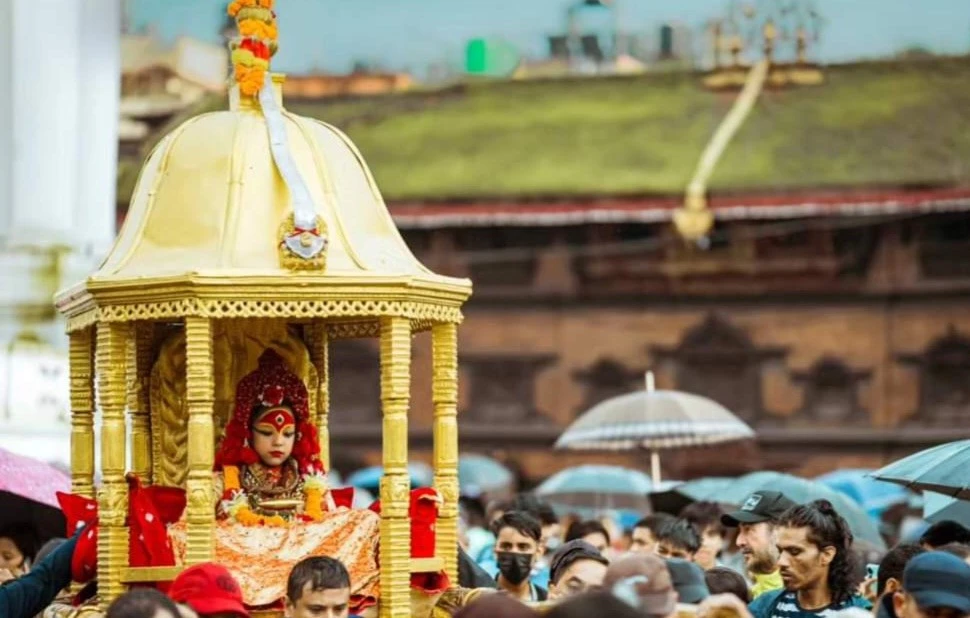Share this Article
Introduction: The Cultural Fabric of Nepal
Nepal, a land nestled in the lap of the Himalayas, is a country whose identity has been woven through centuries of diverse traditions, rituals, and beliefs. Life and death, the two fundamental pillars of human existence, are celebrated, honored, and mourned in ways that reflect the depth of Nepali culture. From birth ceremonies that welcome a new soul into the world to death rituals that ensure the journey of the departed into the afterlife, these practices are not merely customs but embodiments of a spiritual worldview. In old Nepali society, rituals of life and death carried profound significance, connecting the living with the divine, the community, and the ancestors who came before.
Birth and Early Life Rituals: Welcoming New Souls
In traditional Nepali society, the birth of a child is not only a familial event but also a community celebration steeped in spiritual symbolism. The arrival of a newborn is welcomed with rituals designed to protect the child from malevolent forces and to bless them with health, longevity, and prosperity. Among the Newar communities, for instance, the Janku ceremony marks the early months of a child’s life, where sacred mantras are recited, and offerings are made to the gods. Parents and elders also follow a range of rituals including naming ceremonies, where astrologically auspicious times are chosen to name the child, reflecting the belief that the name holds significant influence over the child’s future.
Additionally, protective rites are performed immediately after birth. In many parts of Nepal, threads tied with specific prayers are placed around the baby’s wrist or neck, and certain foods and spices are used to ward off evil spirits. The intricate combination of spiritual, astrological, and cultural practices highlights the communal effort in ensuring a child’s safe passage into life.
Coming-of-Age Rituals: Transitioning into Society
As children grow, Nepali communities celebrate milestones that signify their passage from infancy to adolescence. These coming-of-age rituals are more than symbolic; they prepare the young for societal responsibilities and spiritual awareness. In Hindu communities, boys undergo the Bratabandha ceremony, an initiation into Vedic education and social duties, marked by sacred threads and chanting of mantras. Similarly, girls in certain communities may undergo rituals that bless their transition into womanhood, acknowledging both biological maturity and social responsibility.
These rituals often involve extended family and neighbors, reinforcing the idea that an individual’s life is intertwined with the broader community. They also serve as a bridge between personal growth and the adherence to social and spiritual codes, ensuring that each generation carries forward the customs of their ancestors.
Marriage and Union: Celebrating Life Partnerships
Marriage in old Nepali society is a complex interplay of social, religious, and familial duties. Traditional weddings are deeply ritualistic, with ceremonies varying among ethnic groups, yet sharing the common goal of sanctifying the union. The Hindu wedding rituals, for example, include the sacred fire ceremony (Agni Puja), where the couple circles the fire, symbolizing their commitment and the divine witness of their union. Similarly, Newar weddings are elaborate, spanning several days with rites that honor ancestors, gods, and the community.
Marriage rituals are not solely personal celebrations; they are occasions for reinforcing social bonds and transmitting cultural values. Families arrange alliances carefully, considering astrology, social compatibility, and economic factors. The meticulous observance of rituals ensures continuity, stability, and harmony within the society, showing how life’s joys are intertwined with spiritual and communal obligations.
Later Life: Aging with Spiritual Awareness
In traditional Nepali society, the later stages of life are regarded with reverence, as elders are seen as repositories of wisdom and moral guidance. Aging is not merely a biological process but a spiritual journey, and rituals surrounding old age reflect the deep respect accorded to senior members of the family and community. Elders are often consulted in matters of religious rites, social decisions, and family disputes, emphasizing their role as custodians of cultural knowledge.
During this period, rituals are conducted to ensure health, spiritual well-being, and harmony with the universe. Offerings to gods and ancestors are common, and elders are encouraged to participate in pilgrimages or spiritual retreats, signifying their preparation for the inevitable transition to the afterlife. Festivals and family gatherings often provide occasions to honor the elderly, reinforcing communal bonds and the belief that wisdom grows with age.
Illness and Healing Rituals: The Intersection of Medicine and Faith
Illness in old Nepali traditions is viewed not merely as a physical ailment but as a disruption in the balance between the human, spiritual, and natural worlds. Healing rituals combine herbal medicine, spiritual intervention, and community participation. Traditional healers, known as Dhami-Jhankris, perform ceremonies that invoke divine assistance and expel malevolent spirits believed to cause disease. These rituals often involve chanting, offerings, and symbolic acts designed to restore equilibrium.
Herbal remedies, prepared from local plants, roots, and minerals, are integrated with these spiritual practices, reflecting the holistic approach of Nepali traditional medicine. Families actively participate in the care of the sick, reinforcing a sense of communal responsibility and compassion. The process is not only about curing the body but also about comforting the mind and soul, demonstrating the interdependence of health, spirituality, and community in old Nepali customs.
Preparing for Death: Rituals of Transition
As life approaches its final stage, old Nepali traditions emphasize the importance of mental and spiritual preparation for death. Death is regarded as a natural passage, and elaborate rituals are performed to ensure the soul’s peaceful transition to the afterlife. In Hindu customs, the Antyesti or last rites are meticulously observed. Families prepare the body with cleansing rituals, dressing it in traditional garments, and performing pujas to guide the soul. Sacred fires are lit, and mantras are recited to purify the surroundings and protect the departed from negative forces.
In Buddhist-influenced communities, death is approached with meditation, prayers, and chants to ease the journey of the soul and promote rebirth in a favorable realm. Monks and spiritual guides are often invited to recite scriptures, reflecting the belief that guidance from enlightened beings can facilitate a peaceful transition.
The dying process is thus communal, with neighbors, relatives, and spiritual leaders coming together to honor the life lived and prepare for the journey beyond. This stage of life, like the previous ones, is steeped in ritual, demonstrating a profound understanding of human existence as a continuum, connecting birth, life, and death through spiritual and social practices.
Death: Understanding the Sacred Transition
In old Nepali culture, death is not seen merely as an end but as a sacred transition from the physical world to the spiritual realm. It is a passage that requires meticulous observance of rituals to ensure the soul’s journey is unhindered. The community plays an integral role in guiding the deceased through these stages, reflecting the deeply collective nature of Nepali society. The process begins immediately after death, with the family performing purification rites to remove any spiritual impurities associated with the passing of life.
Hindu traditions, the most widespread among Nepalis, consider the timing and manner of death significant. Sacred rites, including washing the body, applying turmeric and sandalwood, and dressing it in white cloth, are performed with utmost care. Fire, viewed as a purifier, often plays a central role, symbolizing both the cleansing of the soul and its liberation from the body. The rituals are accompanied by chanting of Vedic mantras, designed to guide the departed spirit toward Moksha, or liberation from the cycle of birth and death.
Funeral Rituals: Cremation and Burial Practices
The funeral customs in Nepal vary according to religious affiliation, caste, and local tradition. Among Hindus, cremation is the preferred practice, usually performed on the banks of rivers, which are considered sacred conduits for the soul’s journey. The pyre is lit by the eldest son or close male relative, symbolizing the family’s role in supporting the soul’s transition. The ashes are often collected and immersed in holy rivers, reinforcing the belief that water carries the soul closer to liberation.
Buddhist communities, in contrast, may employ burial or sky burial in some Himalayan regions, with emphasis on meditation and prayer to assist the soul’s rebirth in a favorable realm. Newar and other indigenous communities have their own unique funeral customs, blending Hindu and Buddhist influences, often spanning several days and involving ritual dances, offerings, and community participation. Each practice reflects a profound understanding of life, death, and the continuity of existence.
Mourning and Social Obligations
Following the funeral, the period of mourning is observed with solemnity and reverence. Families refrain from certain activities, maintain purity rules, and often host communal prayers or shraddha ceremonies to honor the deceased. The duration and nature of mourning vary, but the underlying principle remains the same: to support the soul’s journey and to acknowledge the loss while reinforcing social cohesion. During this time, relatives and neighbors provide emotional support, share meals, and participate in rituals, highlighting the communal fabric of Nepali life.
Mourning rituals also include offerings to ancestors, symbolizing the continuing relationship between the living and the dead. These rites remind the community that death is not the end of existence but a transformation, with the ancestors watching over and guiding their descendants. The reverence for forebears ensures that family traditions, cultural values, and spiritual practices are preserved across generations.
Ancestral Worship: Continuity Beyond Life
Ancestral worship forms a critical aspect of Nepali life, reflecting the enduring belief in the presence and guidance of those who have passed. Families maintain household shrines or visit temples to make offerings and perform rituals that honor their ancestors. Festivals such as Gai Jatra, Pitra Paksha, and Gunla among different communities provide occasions to remember, celebrate, and communicate with the departed souls.
These practices reinforce the continuity between life and death, emphasizing that the living are never separate from the deceased. By honoring ancestors, individuals not only fulfill spiritual obligations but also strengthen social bonds and ensure the transmission of moral and cultural teachings. In essence, ancestral worship embodies the cyclical view of life, where past, present, and future exist in a harmonious continuum.
Festivals: Celebrating the Cycle of Life
In Nepali culture, festivals are not mere occasions for celebration but serve as profound expressions of life’s cyclical nature. They intertwine daily existence with spiritual reflection, emphasizing the interconnectedness of birth, life, and death. Festivals such as Dashain, Tihar, and Losar mark seasonal changes, agricultural cycles, and religious observances, reinforcing the idea that life is part of a larger cosmic order.
During Dashain, the victory of good over evil is celebrated, while also honoring the goddess Durga and invoking blessings for family members. Homes are cleansed, rituals performed, and offerings made, reflecting a symbolic purification that mirrors the spiritual preparation for the later stages of life. Similarly, Tihar, the festival of lights, not only honors gods, animals, and ancestors but also strengthens communal and familial bonds, illustrating the continuity between generations. Through these celebrations, the Nepali people affirm the cycles of life and death as integral parts of human existence.
Seasonal Rites: Aligning with Nature’s Rhythm
Nepal’s diverse geography and agrarian society have historically influenced the timing and significance of rituals. Seasonal rites mark planting and harvesting periods, monsoon arrivals, and winter preparations, connecting human activity to the rhythms of nature. These rites often include offerings to deities, prayers for health and prosperity, and communal gatherings that reinforce social cohesion.
For instance, during Maghe Sankranti, the winter solstice is celebrated with ritual baths, offerings, and feasting, symbolizing purification and renewal. Similarly, in rural communities, post-harvest ceremonies express gratitude to gods, ancestors, and the land itself, blending ecological awareness with spiritual observance. These seasonal rituals demonstrate the profound respect for nature in Nepali thought and its role in sustaining human life, while also preparing communities to confront the inevitability of death with dignity and spiritual mindfulness.
Spiritual Philosophy: Life, Death, and the Human Soul
Underlying all Nepali rituals of life and death is a deep spiritual philosophy that views existence as a continuum rather than a linear process. Life is seen as a temporary manifestation of the soul, and death as a transition to a higher plane of consciousness or rebirth. The recurring themes in rituals—purification, offerings, chanting, and communal participation—reflect the belief that humans are part of a cosmic order that extends beyond the visible world.
This philosophy encourages individuals to live with morality, compassion, and social responsibility, knowing that their actions resonate beyond their physical life. By celebrating births, guiding adolescents, honoring marriages, assisting the dying, and remembering ancestors, Nepali customs create a framework where life and death are inseparable, sacred, and respected. In this context, rituals are not mere formalities but a living philosophy, connecting the human experience with spiritual truths and the rhythms of nature.
Integrating Life and Death in Daily Practice
Old Nepali customs do not confine rituals to isolated life events; they are woven into daily practice. Offerings at household shrines, prayers before meals, and seasonal observances continuously remind individuals of the transient nature of life and the eternal presence of the divine. Even mundane activities are performed with mindfulness and ritual awareness, blending practicality with spirituality. This integration fosters a culture where life is lived with reverence, and death is approached with understanding, ensuring that the community maintains harmony across generations.
Modern Challenges: The Changing Face of Tradition
The rich tapestry of Nepali life and death rituals faces numerous challenges in the modern era. Urbanization, globalization, and exposure to foreign cultures have introduced new lifestyles, beliefs, and technologies that sometimes conflict with traditional practices. In cities, the pace of life, smaller family units, and limited access to communal spaces have made it difficult to perform elaborate rituals as they were traditionally observed.
Economic constraints also play a role. Traditional rituals—especially weddings, funerals, and festival celebrations—often require significant financial resources. Many families now simplify or abbreviate these ceremonies, balancing respect for tradition with modern practicalities. Additionally, migration, both internal and international, has dispersed communities, making collective observances and communal participation more challenging. Despite these pressures, the core spiritual values embedded in these rituals remain influential, even if their forms adapt to contemporary life.
Preservation Efforts: Keeping Tradition Alive
Despite the pressures of modernization, efforts to preserve old Nepali customs are ongoing. Cultural organizations, religious institutions, and community groups actively document, teach, and celebrate traditional rituals. Festivals, once confined to local communities, are increasingly observed on a national and even international scale, allowing diaspora communities to maintain connections with their heritage.
Educational programs in schools often include cultural studies that emphasize traditional ceremonies, folklore, and religious practices, ensuring that younger generations understand their significance. Media, both print and digital, also plays a role, showcasing rituals, interviews with elders, and explanations of ceremonial practices. This preservation is not just about maintaining rituals for ritual’s sake; it is about sustaining the values, moral teachings, and spiritual insights that these customs embody.
Adaptation and Evolution: Tradition in the Modern Context
Interestingly, adaptation has allowed Nepali life and death rituals to evolve without losing their essence. Technology, for example, has enabled virtual participation in ceremonies, allowing family members abroad to engage in weddings, funerals, and festivals in real-time. Rituals have become more streamlined, but the symbolic actions, prayers, and spiritual intentions remain intact.
In urban areas, traditional practices are often blended with modern conveniences. Cremations may take place in designated facilities rather than riverbanks, and offerings can be simplified while still maintaining spiritual significance. Such adaptations demonstrate the resilience and flexibility of Nepali customs, proving that traditions are not rigid relics but living practices capable of surviving—and thriving—in changing contexts.
The Enduring Significance of Life and Death Rituals
Ultimately, the rituals surrounding life and death in old Nepali culture are more than ceremonies; they are expressions of a worldview that honors human existence, community bonds, and spiritual continuity. Even as society modernizes, the core principles—respect for elders, care for the young, reverence for ancestors, and acknowledgment of life’s cyclical nature—continue to guide behavior and social norms.
These customs remind individuals that life is temporary but meaningful, that death is not to be feared but understood, and that human beings are part of a continuum connecting past, present, and future. In preserving and adapting these rituals, Nepali society maintains a profound sense of identity, purpose, and spiritual coherence, ensuring that the wisdom of the past continues to illuminate the lives of future generations.
Conclusion: Reflections on Life, Death, and Cultural Heritage
The rituals of life and death in old Nepali culture offer a profound window into a society where spirituality, community, and the natural world are intricately connected. From the joyful celebrations welcoming a newborn, to the sacred rites guiding adolescents into adulthood, from the sanctity of marriage to the solemnity of death and ancestral worship, each ritual reflects a worldview that sees life as a continuum rather than a series of isolated events.
Nepali customs do more than mark stages of life; they reinforce social bonds, transmit ethical values, and provide spiritual guidance. In every offering, chant, and communal gathering, the living and the dead remain connected, highlighting the enduring presence of ancestors in everyday life. The philosophy underpinning these traditions—honoring the divine, respecting nature, and acknowledging the impermanence of human existence—offers timeless lessons for understanding mortality and celebrating life.
While modernization and urbanization present challenges to these practices, the resilience and adaptability of Nepali culture ensure that rituals continue to thrive, even in transformed forms. Technology, education, and community initiatives allow younger generations to engage with these customs, preserving both their symbolic significance and their spiritual depth.
Ultimately, the study of life and death rituals in Nepal reveals a society that embraces the human journey with reverence, balance, and purpose. These customs are not merely historical artifacts; they are living expressions of cultural identity and spiritual wisdom, reminding all who practice them that life is sacred, death is natural, and heritage is a bridge connecting the past, present, and future. By understanding and honoring these traditions, Nepal continues to uphold a legacy that celebrates both the miracle of birth and the mystery of death, creating a harmonious rhythm that shapes the human experience.
Categories:
Culture & Traditions
Tags:
tradition
,
Life


